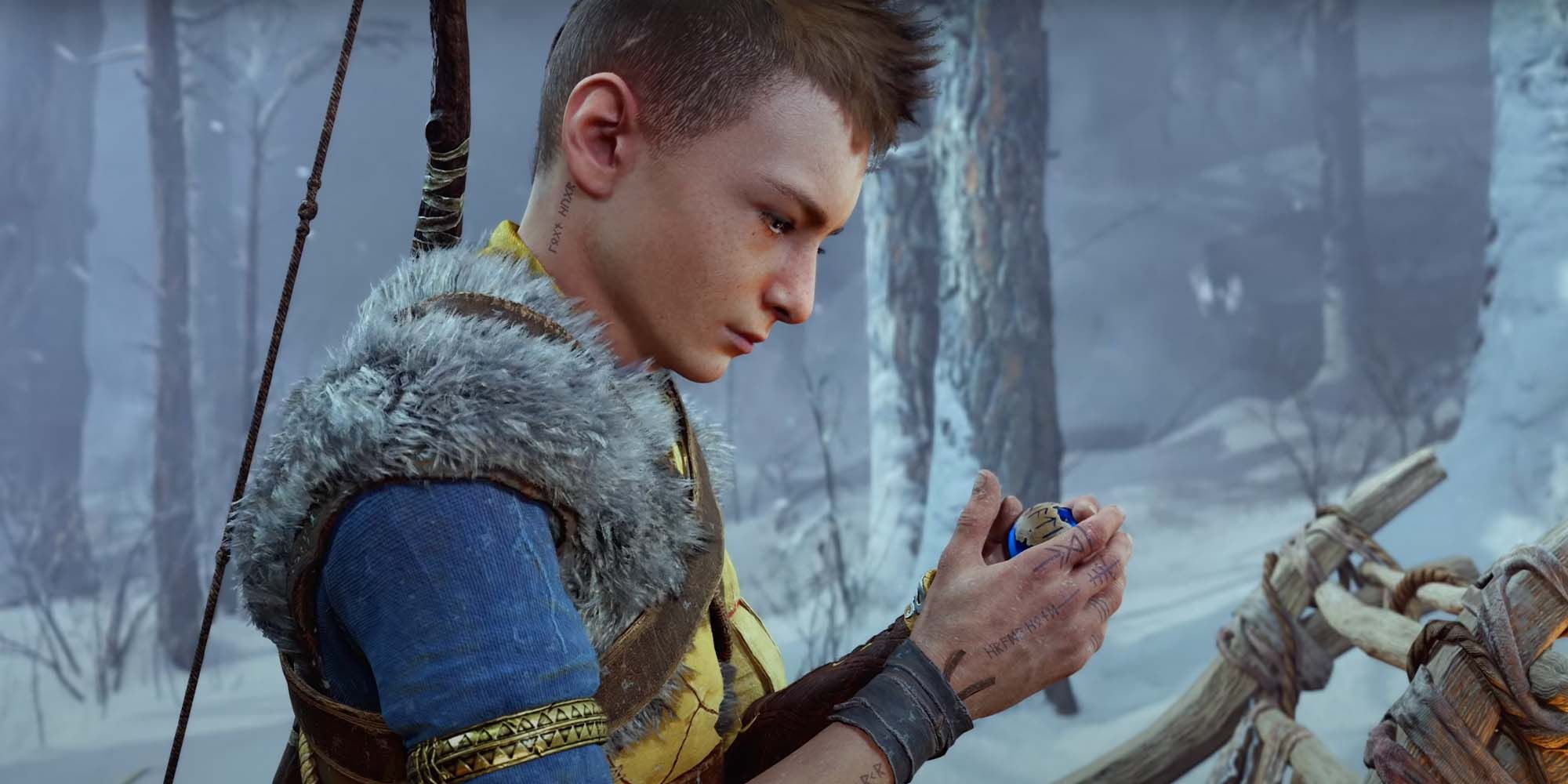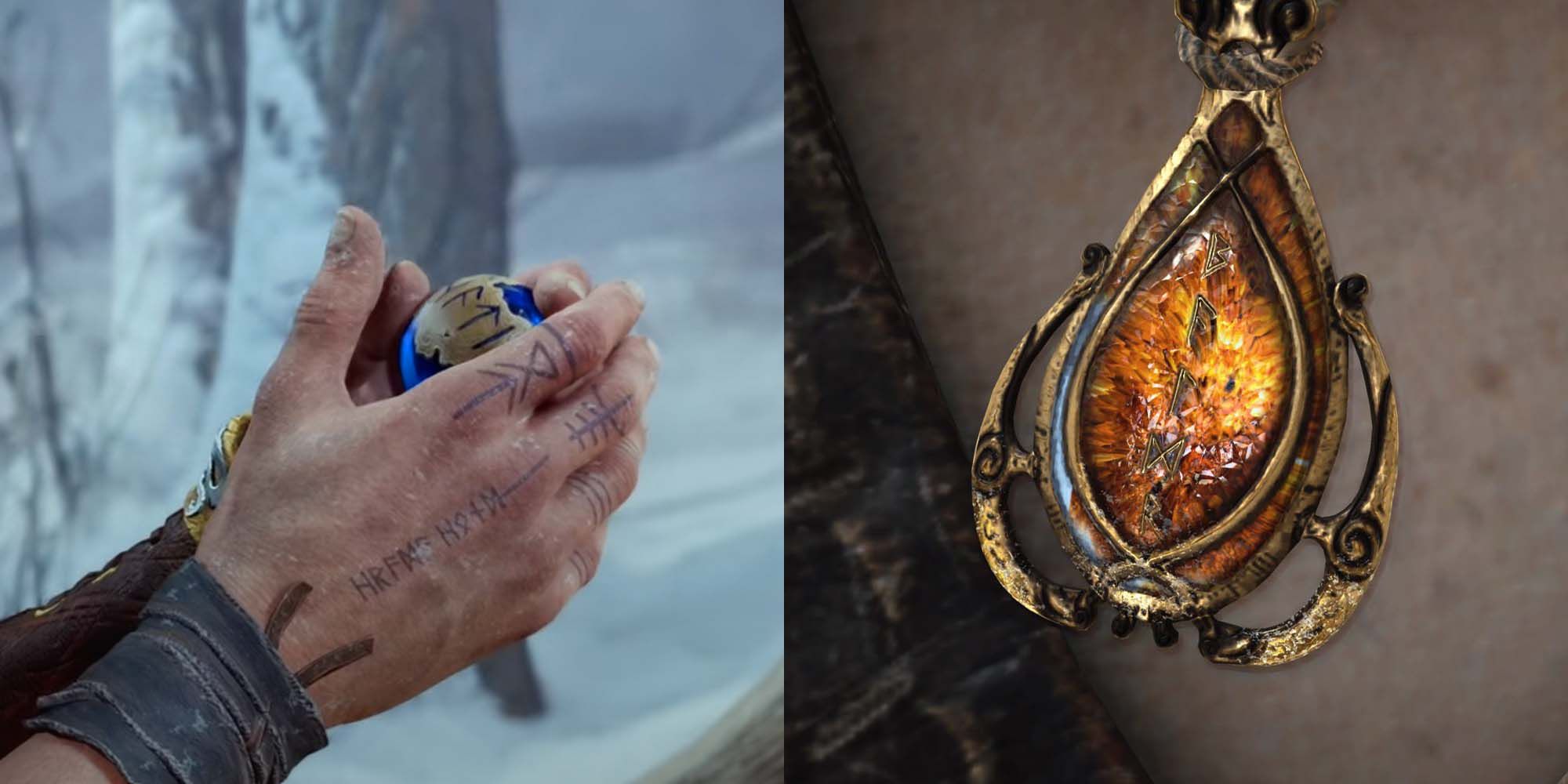The God of War Ragnarök trailer has a lingering shot of Atreus carefully examining a small blue orb. Given how long the shot is and how focused he is on this object, it may be safe to assume that it will be important to the events of Ragnarök. The only questions now are what is it, why does Atreus have it, and what does it have to do with Heimdall, the Guardian of Asgard?
Unfortunately, knowledge of Norse Mythology is famously scarce and that makes it really hard to answer these questions. This is because Norse culture was founded on oral traditions and the many stories of their gods disappeared with the people who could tell them. The shift toward developing a more intricate written language happens during the time that Assassin's Creed Valhalla is set in, as sending messages and crafting treaties were crucial to survival.
The little that's known about Norse Mythology comes from two manuscripts: a collection of anonymous poems called the Poetic Edda, and a more detailed but less poetic manuscript by Snorri Sturluson called the Prose Edda. Since there's no chronological story or consistent through-line, except for Ragnarök, it takes a lot of digging to find small details, such as what this orb may be. Thankfully, there is a possible answer and, if it's true, the orb will be crucial to Atreus's story.
God of War Ragnarök: Atreus' Blue Orb Explained
In this journal article by Audrey Meaney, Snorri Sturluson's retelling of Loki and Heimdall's dispute over an object he called the "Brísingamen" is described. Due to inconsistencies across the poems, the Brísingamen either refers to a magic stone or a necklace that is one of Freya's treasured objects. Regardless, God of War has had no trouble molding and changing Greek and Norse mythology in order to tell its story, and in this case, it's possible that developers chose the magic stone interpretation - a decision that would be incredibly important for two reasons.
First, the Brísingamen is a magic object that is precious to Freya, who plays a major role in the story as one of the pair's antagonists. While it's unclear if Atreus received the Brísingamen before their falling out or potentially stole it before or during the events of God of War Ragnarök, having a magical stone that belonged to Asgard's most powerful witch poses a huge threat to the Aesir. Second, in Norse Mythology, this object is at the center of an early conflict between Heimdall and Loki, who go on to kill each other during Ragnarök. If Heimdall is introduced in God of War Ragnarök, he could easily assume Baldur's role as a reoccurring boss for the older Atreus until Ragnarök, in which their final battle will act as either the literal or metaphorical conclusion to Atreus' story.
This just goes to show the developers' attention to detail and ability to mold mythology. A small blue orb that seems fairly innocuous and barely worth noting, may in fact be one of the driving forces of their conflict with Freya, Heimdall, and Asgard itself. It's clear that Kratos and Atreus will have their work cut out for them in God of War Ragnarök and only time will tell how significant Atreus' new object will truly be.


